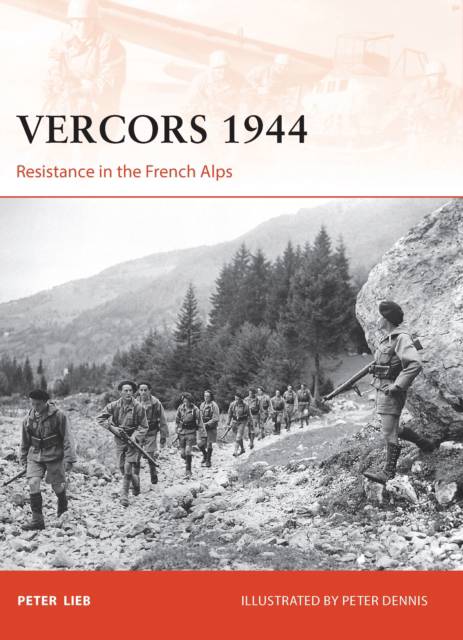
- Retrait gratuit dans votre magasin Club
- 7.000.000 titres dans notre catalogue
- Payer en toute sécurité
- Toujours un magasin près de chez vous
- Retrait gratuit dans votre magasin Club
- 7.000.000 titres dans notre catalogue
- Payer en toute sécurité
- Toujours un magasin près de chez vous
25,45 €
+ 50 points
Description
After D-Day the French resistance rose to sabotage the Nazi war effort. Germany rutghlessly assaulted a French stronghold with Fallschirmjaeger airborne troops.
Fighting insurgents has always been one of the greatest challenges for regular armed forces during the 20th century. From Malaya through Algeria and Vietnam to the ongoing operations in Iraq and Afghanistan, the list is long. The war between the Germans and the French resistance, also called FFI (Forces Françaises d'Intérieur) or Maquis, during World War II has remained a near-forgotten chapter in the history of these 'Small Wars', particularly in the English-speaking world. This is all the more astonishing as agencies like the British SOE (Special Operations Executive) and the American OSS (Office of Strategic Services) pumped a good amount of their resources into the support of the French resistance movement. By diversionary attacks on German forces in the occupied hinterland the Allies hoped the FFI could provide assistance in disrupting German supply lines as well as crumbling their morale. The mountain plateau of the Vercors south-west of Grenoble was the main stronghold of the French Maquis and in July 1944 some 8,000 German soldiers mounted an operation on the plateau and destroyed the insurgent groups there. The battle of the Vercors was the largest operation against the FFI during World War II and the German's fast and crushing victory has caused traumatic memories for the French that persist to the present day. Following D-Day the FFI fully mobilised on orders given from London and posed a real threat to the German lines of communications. Operating from their sanctuaries in the mountains and armed with British and US weapons from Allied air drops, the Maquis descended into the valleys and tried to challenge the German troops of occupation. By mid-June the Germans launched a series of major counter-operations in the mountains which, carried out by the Gebirgsjäger, dispersed the French resistance from the Massif des Bauges and the French Jura. On the mountain plateau of the Vercors the FFI made the mistake of attempting to hold their ground against regular German forces, and were encircled and destroyed, accompanied by terrible reprisals against the local population. British and US liaison teams could do little to help. A month later, a similar operation put paid to the resistance on the Tarentaise. However, the Germans were too short of manpower to exploit these tactical victories and were always compelled to withdraw, letting the French resistance re-appear and take control again. German tactical victories did not translate into strategic success. By their constant harassment the FFI eventually fragmented the German forces. When after the landings at the French Riviera on 15 August 1944 US troops advanced swiftly to the north, German troops could not offer a coherent line of defence in the Alps and had to withdraw from French territory by the end of the month.Spécifications
Parties prenantes
- Auteur(s) :
- Editeur:
Contenu
- Nombre de pages :
- 96
- Langue:
- Anglais
- Collection :
- Tome:
- n° 249
Caractéristiques
- EAN:
- 9781849086981
- Date de parution :
- 18-12-12
- Format:
- Livre broché
- Format numérique:
- Trade paperback (VS)
- Dimensions :
- 183 mm x 246 mm
- Poids :
- 317 g







